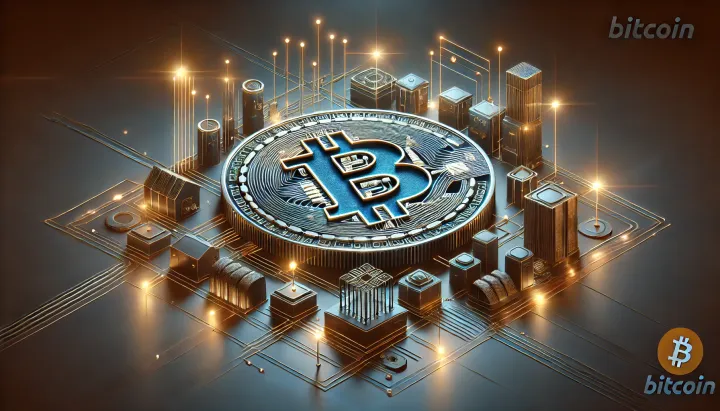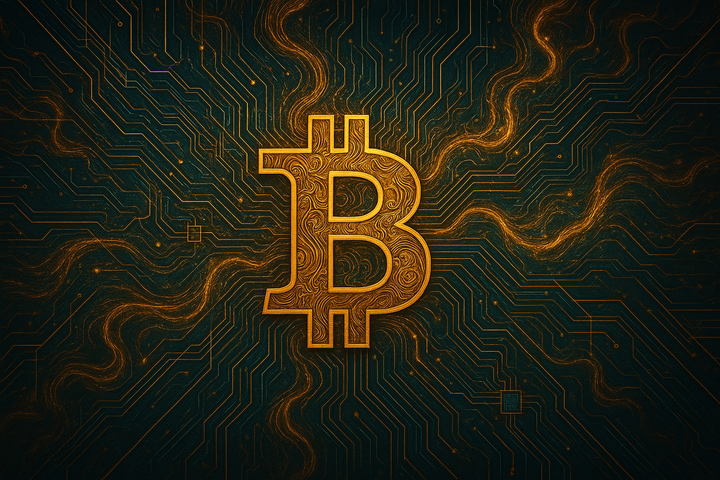Bitcoin’s Infinite Game: Deflation, Incentives, and Governance Risks
The August 07, 2025 episode of the Isabel Foxen Duke podcast features Pete Rizzo analyzing renewed disputes over arbitrary data on Bitcoin’s base layer. He frames these tensions as a continuation of the 2017 block size wars.

- My 'briefing notes' summarize the content of podcast episodes; they do not reflect my own views.
- They contain (1) a summary of podcast content, (2) potential information gaps, and (3) some speculative views on wider Bitcoin implications.
- Pay attention to broadcast dates (I often summarize older episodes)
- Some episodes I summarize may be sponsored: don't trust, verify, if the information you are looking for is to be used for decision-making.
Summary
The September 01, 2025 episode of the Bitcoin Infinity Show features Jeff Booth explaining why Bitcoin represents an “infinite game” distinct from the zero-sum dynamics of fiat and gold. Booth argues that the natural state of free markets is deflation driven by innovation, while debt-based fiat systems require inflation and coercion to survive. He highlights governance struggles, stablecoin risks, and privacy infrastructure as decisive factors for Bitcoin’s long-term resilience.
Take-Home Messages
- Deflationary Markets: Booth argues deflation is the natural state of innovation and value creation.
- Fiat System Limits: Debt-driven fiat cannot allow deflation, creating systemic conflict with Bitcoin.
- Node Diversity: Broad node participation and alternative clients are essential safeguards for decentralization.
- Privacy Infrastructure: Usable tools like Fedi are critical to protect money and communications from surveillance.
- Stablecoin Dependence: Heavy reliance on stablecoins risks re-centralization and undermines Bitcoin’s settlement role.
Overview
Jeff Booth describes human history as governed by zero-sum games that consolidated power through force or monetary extraction. He positions Bitcoin as a structural break, enabling an “infinite game” where cooperation, not coercion, drives progress. The shift is difficult to grasp because societies have never lived in a truly free-market, deflationary world.
He contrasts Bitcoin with gold, which becomes inflationary as higher prices trigger more mining and eventually centralizes under state control. By comparison, Bitcoin’s fixed supply and decentralization prevent similar capture if node operators remain active. Booth underscores that true free markets lower costs over time, meaning deflation should be seen as normal.
Booth explains that fiat money is inherently fragile because it is lent into existence and collapses under deflation. Many economists misinterpret this as a universal need for inflation, a view he rejects. He argues that this misunderstanding reinforces fiat dependence and blocks recognition of Bitcoin’s potential.
Incentives and game theory recur throughout his analysis. Booth warns that most actors rationalize cheating when rewards rise, which explains repeated monetary corruption. He stresses that decentralization, node diversity, and community vigilance are essential to prevent governance capture and to preserve Bitcoin as a neutral settlement network.
Stakeholder Perspectives
- Monetary Policymakers: Fear systemic instability as deflationary adoption erodes debt sustainability and inflation control.
- Developers and Node Operators: Focus on decentralization, client diversity, and protecting against capture through technical consensus.
- Exchanges and Custodians: Favor scalable solutions but risk regulatory capture and overreliance on stablecoins.
- Privacy-Tech Builders: See urgent demand for censorship-resistant infrastructure, emphasizing usability and federation bootstrapping.
- Local Communities and Businesses: Pursue grassroots adoption while navigating capital controls, surveillance, and regional political risks.
Implications and Future Outlook
Deflationary logic challenges debt-based fiat systems, ensuring ongoing conflict between inflationary policy structures and Bitcoin’s monetary design. This contest will surface in regulatory actions, narrative battles, and attempts to suppress adoption while education and advocacy expand the deflationary perspective. The degree to which the public accepts or rejects inflation as “necessary” will influence the trajectory of adoption.
Governance and decentralization remain critical pressure points. If node diversity, alternative clients, and vigilant operators persist, Bitcoin can withstand attempts to centralize decision-making or reorient incentives toward custodial actors. Conversely, complacency could allow subtle forms of capture that replicate fiat’s structural weaknesses.
Privacy technologies and settlement models are emerging as decisive battlegrounds. If stablecoins and custodial intermediaries dominate transaction volume, Bitcoin risks being subordinated to fiat frameworks. But if peer-to-peer infrastructure and federations scale, users gain agency, censorship resistance, and long-term security.
Some Key Information Gaps
- How can educational efforts correct the misconception that inflation is required for productivity? Correcting this belief is vital to building public support for deflationary monetary systems.
- What are the systemic risks when debt-driven fiat systems encounter deflationary forces? Identifying these risks helps policymakers prepare for instability during transition periods.
- What adoption pathways make privacy technologies accessible to mainstream users? Ensuring usability is essential to prevent centralization and surveillance-driven chokepoints.
- How can Bitcoin avoid gold’s fate of centralization while maintaining scarcity-based value? Addressing governance and node participation is key to sustaining decentralization.
- How could stablecoin dominance undermine Bitcoin’s role as a settlement layer? Evaluating this risk is necessary to safeguard Bitcoin’s neutrality in global settlement.
Broader Implications for Bitcoin
Monetary Transition Pressures
Bitcoin’s deflationary structure directly conflicts with debt-driven fiat systems, intensifying monetary and political instability. Policymakers will face mounting pressure to reconcile collapsing debt sustainability with growing Bitcoin adoption. Over time, hybrid reserve models or dual systems may emerge as governments attempt to manage this transition.
Governance Resilience
The long-term credibility of Bitcoin hinges on decentralized governance. If reliance on a narrow group of developers or custodians grows, systemic vulnerabilities will mirror those of fiat. Sustained node diversity and client choice will be critical to preventing capture and ensuring durability.
Privacy and Surveillance Dynamics
As states expand surveillance and impose capital controls, demand for private, censorship-resistant money will escalate. Privacy technologies could shift from niche tools to mainstream infrastructure underpinning both financial and communication networks. This transformation will shape not only individual freedoms but also global power dynamics.
Stablecoin Integration Risks
Stablecoins may serve as an onboarding tool but carry structural risks of reinforcing inflationary monetary frameworks. Heavy dependence could redirect settlement toward custodial choke points, undermining Bitcoin’s neutrality. Whether Bitcoin adoption strengthens or weakens depends on how communities manage this tension.



Comments ()